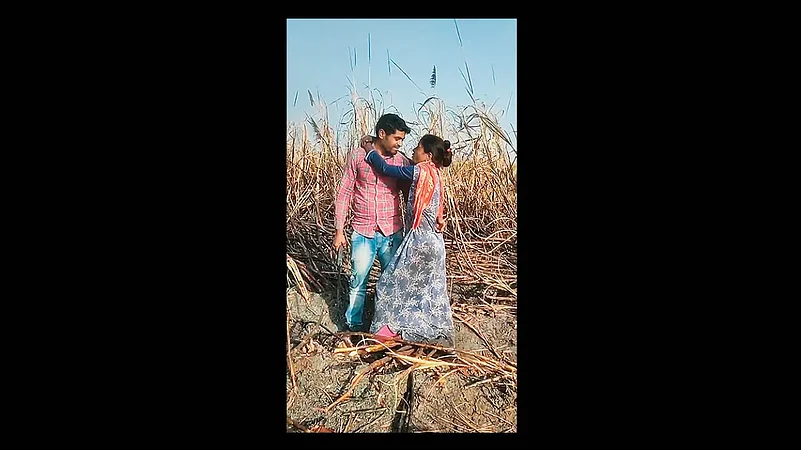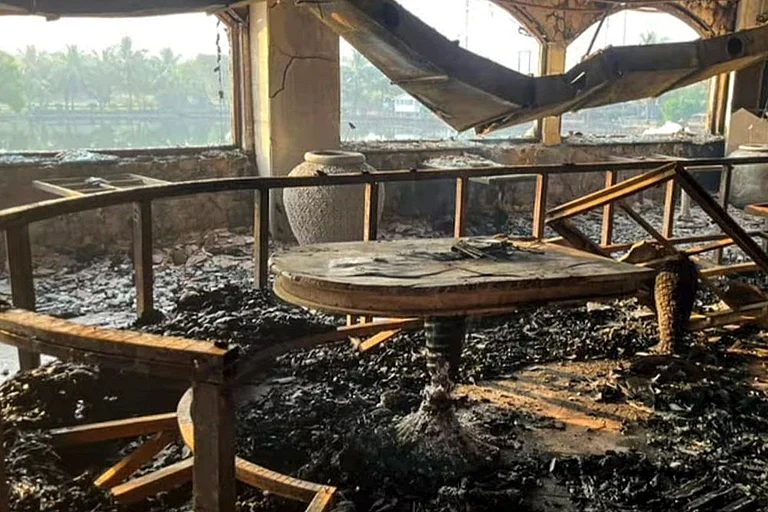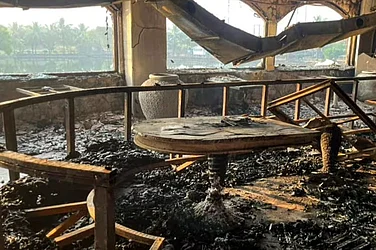Against the backdrop of an undulating barren terrain, the ‘heroine’ sways to the tune of a popular Bollywood number. The ‘hero’ steps into the scene, as he catches the aanchal of her printed cotton sari. They couple gazes into each other’s eyes as the video ends, rather abruptly, but not before making you smile at the rustic innocence of the actors. Pick out another video on YouTube and the scene remains the same, as does the hero. But the ‘heroine’ changes as a new face enters the frame. Swaying to another Bollywood hit, with cotton and sorghum fields in the backdrop.
Welcome to the world of Dinesh Pawar (29) and his wives, Pooja (27) and Lakhani (25)—former TikTok celebrities and now rising stars in its desi version, Moj, as well as Instagram. Far away from the glitz and glamour of tinsel town, in Jamde village in Dhule district of Maharashtra, the Pawars are dancing their way to stardom, churning one viral video after another in their own inimitable style. Their first brush with fame came about two-and-a-half-years ago, when one of their dance videos on TikTok received one million hits. With around 30 lakh followers, the trio once earned Rs 1 lakh a month till the app was banned in June 2020. Pawar and his wives—he married two sisters—suffered a huge setback, financially and emotionally. Last year, during Navratri, Dinesh, his wives, four children and a sizeable population from their village shifted to Bardoli in Gujarat to work as daily wagers in the sugarcane fields. Forced to work for Rs 100-a-day as farm labourers, the Pawars took a break for mental recharge.
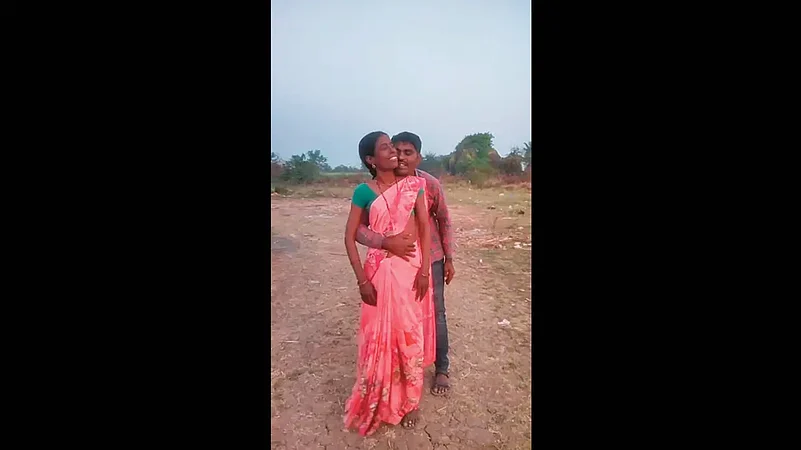
But they are back and how. Not ones to be cowed down by the downward turn of events, Pawar and his wives switched to Instagram and Moj. Though popular on Moj, they are yet to gain the huge following they had on TikTok. Their videos of popular Bollywood dance numbers are once again gaining popularity due to the rustic charm and rural settings. “We are regularly shooting videos in sugarcane fields. We make at least two videos every alternate day and post them on Moj,” Pawar tells Outlook.
The Pawars belong to the Phase Pardhi tribe found in Maharashtra, parts of Madhya Pradesh, Gujarat and Andhra Pradesh. The British had branded some of the tribal communities, including the Phase Pardhis, as criminals from birth under the Criminal Tribes Act. In 1952, they were denotified as criminals and categorised as a nomadic tribe. However, the stigma remains till date. Discrimination against the Pardhis is rife and they are still not allowed to settle in many villages. Jamde is no different and the Pardhis’ settlements are found far away from the main settlements, often lacking the basic amenities available there.
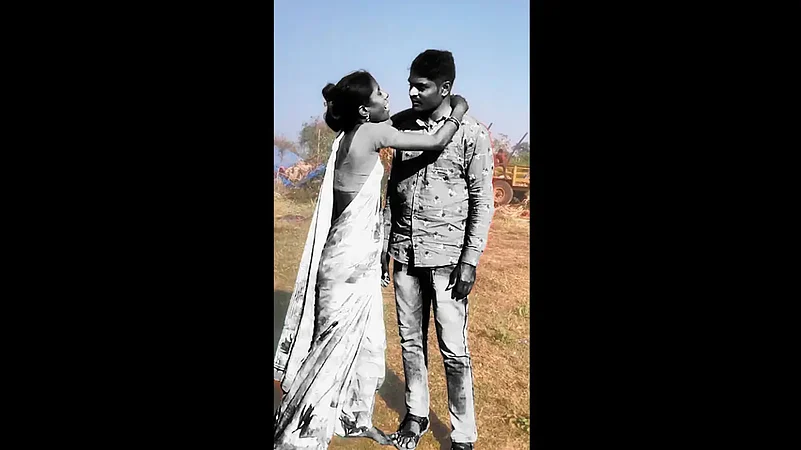
Though bigamy is illegal in India under the Hindu Marriage Act, marrying multiple women is a common practice among the Phase Pardhi tribe. Often there are no formal ceremonies and a man and woman just start cohabiting. They garland each other in front of their deity and are considered married. The marriages are not formally registered. “They are very happy together,” Dinesh says about his wives with whom he has three daughters and a son. For the community, Bollywood movies provide the much-needed succour in their dreary lives. Bollywood’s influence on Jamde is evident in the names of its residents—Rishi Kapoor, Sunny Deol, Sashi Kapoor and Mithun Chakraborty. With Bollywood in their hearts, TikTok provided the perfect outlet to Dinesh and his wives in their quest for a purpose in life.
No wonder, Pooja and Lakhani cried bitterly after TikTok was banned, as they were crazy about making videos, says Pawar. The trio had made more than 700 videos for TikTok and had also posted these on the Hong Kong-based app VMate. “We earned Rs 1 lakh a month from TikTok and VMate. Both these applications were banned and we lost our biggest source of income,” Pawar adds. He, however, admits to not being very fond of YouTube, while Instagram is just about “okay”. “With the Moj app, our videos go viral and we make about Rs 9,000 per month. But Moj cannot beat the reach of TikTok. Some of our videos had millions of hits. The money too was good then,” Pawar says.
One of their videos, set to the hit song Dil Diwana from the Salman Khan starrer Maine Pyar Kiya got them their first million views and a mention by actor Raveena Tandon. “We did not understand (anything) at all. When the press came to interview us and we saw ourselves on TV channels, we knew we had done something big” says Dinesh, who is illiterate like Pooja and Lakhani. The TikTok ban hit Jamde village hard, as 12-odd couples who were making videos lost out on their incomes. While Pawar migrated to Moj, the other couples gave up after their attempts did not get them any money. Today, the Pawars have over 1,200 videos.
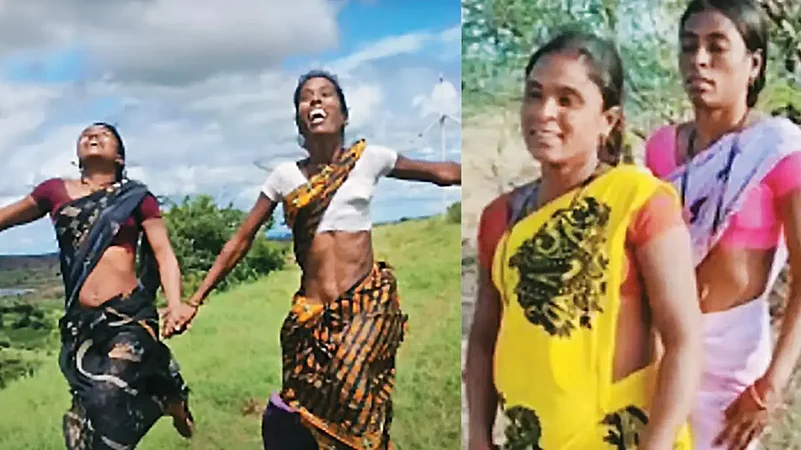
Life continues to be a challenge, but they say they are not done yet. Though the district has seen the establishment of numerous educational institutions, Jamde village is yet to see any signs of development. It is counted among one of the most backward villages in Maharashtra. The Pawars live in a small hut with bamboo and hay-matted sheets for walls and plastic sheets for roof. Their electricity comes via wires ‘hooked’ illegally to a nearby pole. There is no nearby access to potable water and they have to travel some distance to fetch water.
But all the hardships have nor dented the community’s love affair with Bollywood. “We let the music seep into our bodies and dance like we are possessed. My wives are good dancers,” says Pawar. “We are always on the lookout for new locations. The best videos are shot in the fields, people really like them.” A major part of their evenings is spent watching Bollywood songs on YouTube and then re-enacting them. “When one wife is busy the other will do the video with me. We do not need any specific time. We can make videos anywhere, anytime,” he adds. Initially, they wore “regular” clothes for the videos, but as they gained numbers and popularity they started investing in clothes and other accessories. While Pawar shed his synthetic trousers for low-priced jeans, his wives swapped saris for salwar-kurtas. “One wife wears sari and the other, is in salwar-kurtas for the videos.”
Initially, when Pawar communicated the idea of making dance videos to his wives, they laughed and hid their faces in their sari pallus. He sold some of the goats he owned and purchased an Android mobile phone on which they started watching Bollywood songs on YouTube. “They got interested. We learnt our dances from YouTube. Initially, it was tough, but now it is easy,” he says. In the early days of their video-making, they needed numerous retakes but not anymore. Now they practice the dance before shooting the video. “We include our own steps in the dances. We think the people like them because most of our videos have crossed million views. Even Raveena Tandon commented on one of our videos,” says Pawar. “Since we cannot read the comments, I ask some of my friends from the village to read them out for me. They help us a lot.”
ALSO READ: Theatre Of The Absurd: Reeling In The Droll
Before he started making videos, Pawar had a hair cutting saloon close to the village, which was frequented by the village residents. A majority of his clients would watch videos on various applications on their mobile phones. He was curious and watched with them. “It triggered my interest. I asked them questions and they introduced me to YouTube. One of them told me that even I could make videos. My brother-in-law who is educated helped us with the video making,” narrates Pawar.
ALSO READ: Punjabi Tadka: Vlogging Their Way To Success
Caught in the dreamworld of making videos, Pawar found that he had no time and little interest in running the saloon. He sold the shop for Rs 1.50 lakh and invested the money in arming himself with the wherewithal to make the videos. “I tried to make some videos but had to keep taking pauses when clients came for haircuts. I would earn Rs 7,000-8,000 monthly from the saloon, but when I started posting my videos on VMat and Tik Tok, I started earning Rs 1 lakh every month.”
Though their house continues to be a home with porous walls and a plastic roof, the immediate elevation of their lifestyle began with an account in the village bank branch. The applications would deposit the money into bank accounts and not hand out cash, says Pawar. The wives started wearing nail polish, kajal and lipstick for the videos. “When one of our videos crossed one million, the press came to our settlement. They interviewed us and we were shown on TV.” Fame brought with it curious villagers to their settlement. From being shunned, to getting invited for selfies with other villagers, the Pardhis started finding acceptance within Jamde. They could go to the shops, sell their wares and agricultural produce in the village markets, drink tea in the village tea shop and even eat at the local eateries. As people started responding to their videos and fame came their way, their rustic dialect picked up some English, Marathi and Hindi words.
(This appeared in the print edition as "Love is a Viral Thing")
ALSO READ
Haima Desphande in Mumbai






